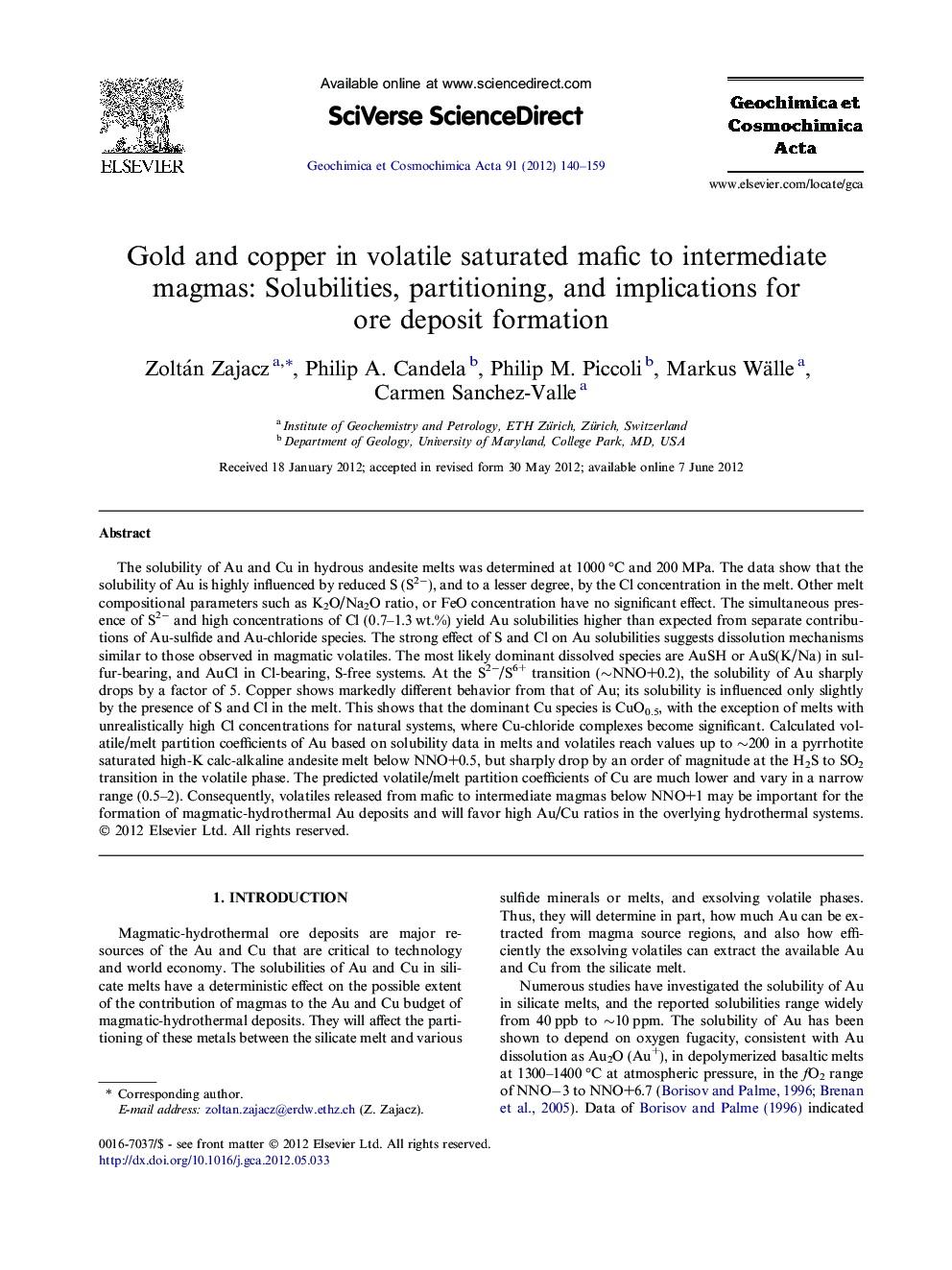| کد مقاله | کد نشریه | سال انتشار | مقاله انگلیسی | نسخه تمام متن |
|---|---|---|---|---|
| 4702703 | 1638066 | 2012 | 20 صفحه PDF | دانلود رایگان |

The solubility of Au and Cu in hydrous andesite melts was determined at 1000 °C and 200 MPa. The data show that the solubility of Au is highly influenced by reduced S (S2−), and to a lesser degree, by the Cl concentration in the melt. Other melt compositional parameters such as K2O/Na2O ratio, or FeO concentration have no significant effect. The simultaneous presence of S2− and high concentrations of Cl (0.7–1.3 wt.%) yield Au solubilities higher than expected from separate contributions of Au-sulfide and Au-chloride species. The strong effect of S and Cl on Au solubilities suggests dissolution mechanisms similar to those observed in magmatic volatiles. The most likely dominant dissolved species are AuSH or AuS(K/Na) in sulfur-bearing, and AuCl in Cl-bearing, S-free systems. At the S2−/S6+ transition (∼NNO+0.2), the solubility of Au sharply drops by a factor of 5. Copper shows markedly different behavior from that of Au; its solubility is influenced only slightly by the presence of S and Cl in the melt. This shows that the dominant Cu species is CuO0.5, with the exception of melts with unrealistically high Cl concentrations for natural systems, where Cu-chloride complexes become significant. Calculated volatile/melt partition coefficients of Au based on solubility data in melts and volatiles reach values up to ∼200 in a pyrrhotite saturated high-K calc-alkaline andesite melt below NNO+0.5, but sharply drop by an order of magnitude at the H2S to SO2 transition in the volatile phase. The predicted volatile/melt partition coefficients of Cu are much lower and vary in a narrow range (0.5–2). Consequently, volatiles released from mafic to intermediate magmas below NNO+1 may be important for the formation of magmatic-hydrothermal Au deposits and will favor high Au/Cu ratios in the overlying hydrothermal systems.
Journal: Geochimica et Cosmochimica Acta - Volume 91, 15 August 2012, Pages 140–159